Originality is one of the most important factors in determining the value of a classic Corvette IF you are looking for a Corvette that will provide the highest rate of appreciation in value during your ownership tenure. Originality is also one of the most misunderstood aspects so buyers need to be aware of what to look for and what questions to ask a seller. Don’t take the sellers word that the car is original. One of the single most important questions to ask the seller is if there is documentation available. Why is this important? A Corvette with Documentation is essentially a Corvette with a pedigree. It will be worth more than a Corvette without documentation and depending on the model year and options, the difference can be worth about 25% of the Corvette’s value.
So let’s talk about documentation. Documentation commonly refers to those documents that were produced and delivered with the car from the factory, and therefore can be used to confirm the originality of the Corvette. These documents will show what options and colors the Corvette was equipped with when it left the factory. Here is a breakdown of the most common documents and their importance in determining originality.
The most common document is the window sticker or dealer invoice, which will usually include the Corvette’s VIN, the interior and exterior colors and a list of the options. While it’s nice to have the original window sticker or dealer invoice, these are not really considered authoritative documents because they were generated from the dealership (the middleman) and not the factory (the source). However a window sticker or dealer invoice is better than having nothing.
The most sought-after authoritative document that confirms a Corvette’s originality is the factory Build Sheet. As Corvettes rolled down the assembly line, workers would refer to the build sheet to determine what options to add to each Corvette. Beginning in 1967, a copy of the build sheet was glued to the top of the gas tank prior to the tank’s installation on the Corvette, hence the term “Tank Sticker”. While the tank sticker lists the options and the RPO (Regular Production Option) codes, the Build Sheet goes a step further by identifying the numbers of the engine, transmission, axle and even the keys. Build sheets were usually placed in the glove box for delivery to the dealer. Some dealers provided the build sheets to the new owners, some didn’t. In lieu of having the Build Sheet, the tank sticker ranks a close second in documents to have.
Another document that provides a basis for determining originality is the Protect-o-Plate. The Protect-o-Plate is a small piece of stamped metal that was affixed to the back of the warranty book. Interestingly, the characters on the POP are reversed. The POP was used to transfer the owner’s contact and car information onto service forms, much like the manual credit card machines transfer the cards information to a receipt. The Protect-O-Plate contains the VIN, trim and paint codes, as well as the specific engine, transmission and axle numbers. Corvettes with Protect-O-Plates are much rarer because the Warranty book wasn’t always passed from one owner to the next.
The last piece of factory documentation is attached to the car itself and is called the Trim Tag. The Trim Tag specifies the Style (Coupe or Convertible) the exterior paint color and interior color and material (Leather or Vinyl). Unlike all the other documents, the VIN is excluded from the Trim Tag. Since the Trim Tag is attached to the Corvette, always ask the seller for a picture of it and confirm the codes with a Corvette Black Book or other reference guide.
All of these documents are helpful in determining the originality of a Corvette. Some sellers may only have one or two of the items listed. What is important is that you have a basic understanding of what the documents are and how to identify the codes that are listed.
Buyers do need to be aware of a recent trend over the last five years where some owners and restorers are creating their own documentation and trying to pass them off as originals. Today you can visit eBay and purchase replacement Trim Tags, Window Stickers and even build sheets that are customized based on the buyer’s request. Engines today can be restamped and documentation counterfeited, and voila! A new “matching-numbers” Corvette is born. Thankfully, the NCRS has documented the engine stamping process as it was done originally at the factory and has produced a book and trained their judges to look for the characteristics of a restamped engine.
It’s always a good idea to have someone knowledgeable about classic Corvettes take a look at the car before buying, or at the very least, inspect the car prior to taking ownership. This could be an experienced appraiser, the local Corvette shop or even an NCRS judge, who can sometimes be hired to review a Classic Corvette prior to purchase. They are trained to spot fake trim tags and engine stamps and that could save you thousands of dollars.
I often preach that when buying a Corvette, knowledge is power. Hopefully, this insight into Corvette documentation will provide you with some additional questions to ask the seller and will lead to the successful purchase of the classic Corvette of your dreams.
Related:
Five Factors That Drive Corvette
Values – Options
-

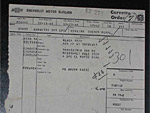
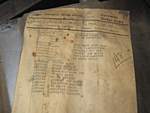
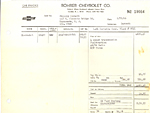
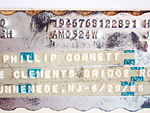
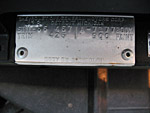

![[VIDEO] Dennis Collins Checks the Numbers on a 1970 Corvette LT-1 Before Taking It Home [VIDEO] Dennis Collins Checks the Numbers on a 1970 Corvette LT1 Before Taking It Home](https://www.corvetteblogger.com/images/content/uploads/2024/04/041724_1-218x150.jpg)

Did you happen to notice the section in the UAW Contract Summary (as reported by The Car Connection.com) on GM’s product plans for Bowling Green in future years? It states: "GM’s assembly plant in Bowling Green, Ky. will continue to build the Corvette and the Cadillac XLR until 2011. Replacements for both products are due in 2012, according to the union." If true, that means the C7 will arrive one year LATER than previously assumed. Something to keep an eye on…
I have a 66 convertible Vette seams to be unrestored and looking for it’s build sheet, would it be on the gas tank like a 67 , if so would I be able to reach up from underneath to remove or what will it take to retrieve it.
Thanks for the help
Bob
Keith, send me a email, we share the same last name, just bought a 75 L-82.
Comments are closed.